Lymph node position. Popliteal Lymph Nodes: Anatomy, Location, and Clinical Significance
Where are popliteal lymph nodes located. What is the anatomy of popliteal lymph nodes. How many popliteal lymph nodes are there. What do popliteal lymph nodes drain. What causes popliteal lymphadenopathy. How are popliteal lymph nodes examined.
Anatomy of the Popliteal Fossa
The popliteal fossa is a diamond-shaped space located behind the knee. Its boundaries are formed by several muscles:
- Superomedial: Semimembranosus and semitendinosus muscles
- Superolateral: Biceps femoris muscle
- Inferior: Heads of the gastrocnemius muscle
This space contains several important structures, including blood vessels, nerves, and lymph nodes. To aid in remembering the contents and borders of the popliteal fossa, a useful mnemonic is “Serve And Volley Next Ball Go!” Each word corresponds to a specific structure or border:
- Serve: Semitendinosus and Semimembranosus (medial border)
- And: popliteal Artery (deepest structure)
- Volley: popliteal Vein (superficial to the artery)
- Next: tibial and common fibular Nerves (most superficial structures)
- Ball: Biceps femoris (lateral border)
- Go: Gastrocnemius two heads (inferior border)
Popliteal Lymph Nodes: Number and Location
How many popliteal lymph nodes are there? Typically, there are 6 to 7 popliteal lymph nodes embedded within the fat of the popliteal fossa. These nodes are relatively small in size but play a crucial role in the lymphatic drainage of the lower limb.
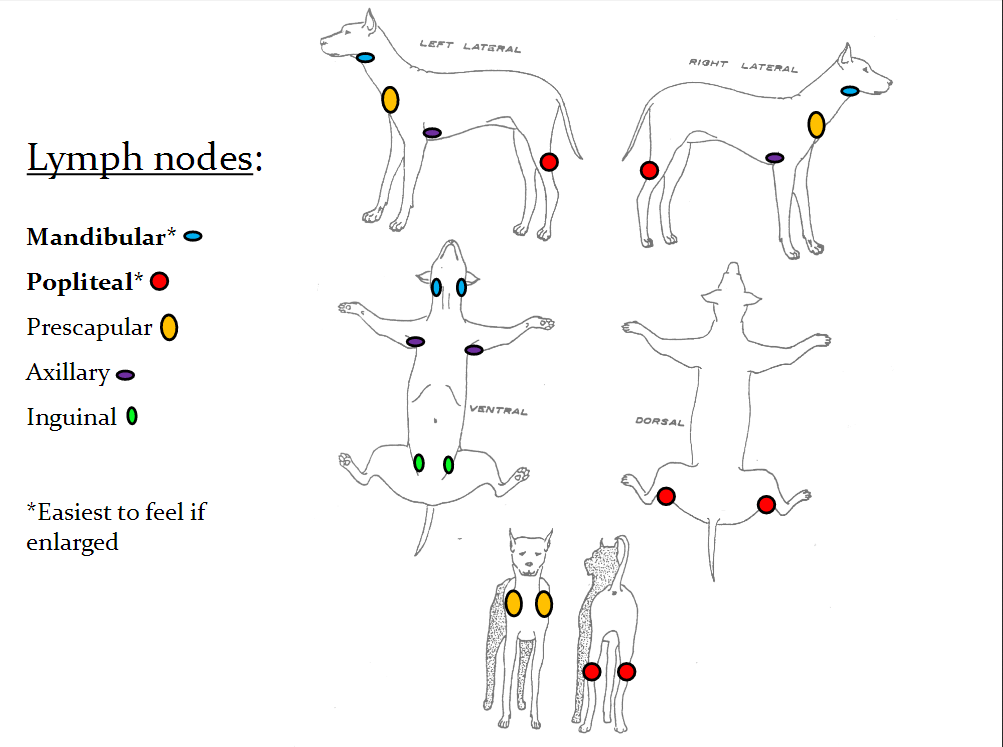
The location of popliteal lymph nodes can be described as follows:
- One node is situated at the junction where the short saphenous vein meets the popliteal vein, just deep to the popliteal fascia.
- Another node is located between the popliteal artery and the dorsal aspect of the knee joint.
- The remaining nodes are distributed around the popliteal vessels.
Lymphatic Drainage Patterns of Popliteal Nodes
What do popliteal lymph nodes drain? These nodes are responsible for receiving lymph from various regions of the lower limb:
- The node near the short saphenous vein drains the superficial regions of the lateral leg and the sole of the foot.
- The node between the popliteal artery and knee joint receives lymphatic vessels from the knee joint itself.
- The other nodes receive lymph from trunks accompanying the anterior tibial, posterior tibial, and fibular arteries.
After collecting lymph from these areas, where does it go next? The majority of the efferent lymphatic vessels from the popliteal nodes travel along the femoral vessels to reach the deep inguinal lymph nodes. A small number of vessels accompany the greater saphenous vein and drain into the superficial inguinal lymph nodes.
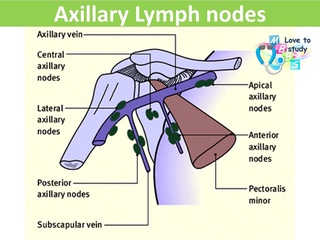
Mechanism of Lymph Flow in the Lower Limb
How does lymph move from the legs to the inguinal region? The movement of lymphatic fluid is facilitated by two main factors:
- Muscular contractions: The muscles in the leg act as pumps, helping to propel lymph upwards against gravity.
- Valves in lymphatic vessels: These one-way valves prevent the backflow of lymph, ensuring its continued movement towards the inguinal region.
This system of lymph flow closely mirrors the venous circulation of the lower limb, employing similar mechanisms to overcome gravitational forces and maintain efficient fluid transport.
Clinical Significance: Popliteal Lymphadenopathy
What causes popliteal lymphadenopathy? Enlargement of popliteal lymph nodes, known as popliteal lymphadenopathy, can occur due to various reasons:
- Melanoma
- Abscess formation
- Local infection in the lower limb
How are enlarged popliteal lymph nodes detected? Popliteal lymphadenopathy is best identified through two main methods:
- Direct manual examination: A healthcare provider can palpate the popliteal fossa to feel for enlarged nodes.
- Ultrasound examination: This imaging technique can provide detailed visualization of the lymph nodes, allowing for assessment of their size, shape, and internal structure.
Importance of Popliteal Lymph Nodes in Diagnostic Imaging
Why are popliteal lymph nodes important in diagnostic imaging? These nodes serve as crucial landmarks and potential indicators of pathology:

- In oncology: Enlarged popliteal nodes may suggest metastasis from lower limb tumors, particularly melanoma.
- In infectious diseases: They can indicate the presence and spread of infections in the lower leg or foot.
- In rheumatological conditions: Some autoimmune disorders may cause generalized lymphadenopathy, including in the popliteal region.
Various imaging modalities can be used to visualize popliteal lymph nodes, including:
- Ultrasound: Offers real-time, radiation-free imaging and is often the first-line choice.
- MRI: Provides detailed soft tissue contrast, useful for assessing node structure and surrounding tissues.
- CT: Can be employed for whole-body staging in cases of suspected malignancy.
- Lymphoscintigraphy: Helps map lymphatic drainage patterns, particularly useful in melanoma staging.
Comparative Anatomy: Popliteal vs. Inguinal Lymph Nodes
How do popliteal lymph nodes compare to inguinal lymph nodes? While both are part of the lower limb lymphatic system, they differ in several aspects:

| Aspect | Popliteal Lymph Nodes | Inguinal Lymph Nodes |
|---|---|---|
| Number | 6-7 nodes | 8-10 superficial, 3-5 deep nodes |
| Size | Relatively small | Generally larger |
| Location | Popliteal fossa | Groin region |
| Drainage area | Lower leg, foot, knee joint | Lower limb, external genitalia, lower abdominal wall |
| Clinical accessibility | Less accessible | More easily palpable |
Understanding these differences is crucial for accurate diagnosis and treatment planning in various lower limb pathologies.
Embryological Development of Popliteal Lymph Nodes
How do popliteal lymph nodes develop embryologically? The formation of these nodes is part of the complex process of lymphatic system development:
- Lymphatic sac formation: Around the 6th week of gestation, lymphatic sacs begin to form from outgrowths of the venous system.
- Lymphatic plexus development: These sacs give rise to a primitive lymphatic plexus that spreads throughout the body.
- Node formation: Lymphoid tissue accumulates at specific points along this plexus, forming lymph nodes.
- Popliteal node specificity: The popliteal nodes develop in conjunction with the formation of the lower limb, becoming specialized for draining this region.
This developmental process explains why popliteal lymph nodes are so intimately associated with the vascular structures in the popliteal fossa and why they play a crucial role in the immune surveillance of the lower limb.
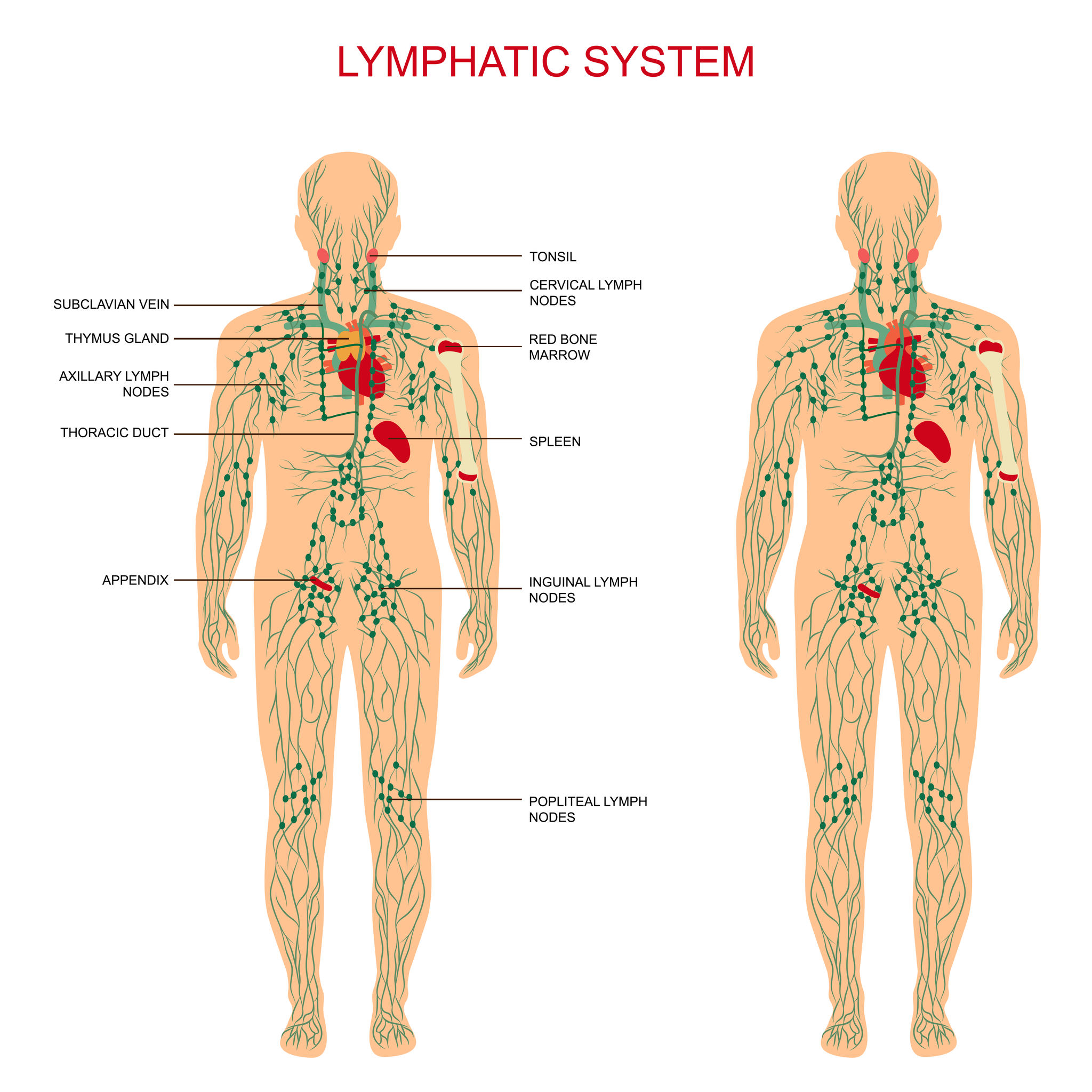
Factors Influencing Popliteal Lymph Node Development
Several factors can influence the development and final arrangement of popliteal lymph nodes:
- Genetic factors: Genes controlling lymphangiogenesis play a crucial role.
- Growth factors: Vascular endothelial growth factor C (VEGF-C) is particularly important for lymphatic development.
- Mechanical forces: The movement and growth of the developing limb can influence node positioning.
- Environmental factors: Maternal nutrition and exposure to certain substances may impact lymphatic development.
Understanding these developmental processes and influencing factors can provide insights into congenital lymphatic disorders and potential therapeutic targets for lymphatic-related diseases.
Popliteal Lymph Nodes in the Context of Lymphoma
How are popliteal lymph nodes involved in lymphoma? Lymphoma, a cancer of the lymphatic system, can affect lymph nodes throughout the body, including the popliteal nodes. While popliteal involvement is less common than in other node groups, it can occur in certain types of lymphoma:
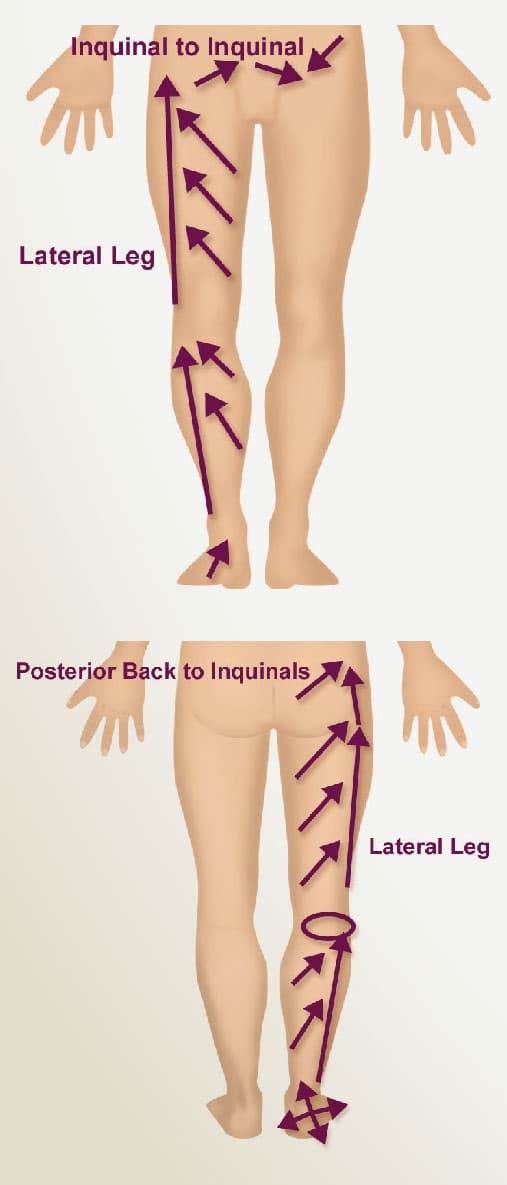
- Non-Hodgkin lymphoma: May present with isolated or generalized lymphadenopathy, potentially including popliteal nodes.
- Hodgkin lymphoma: Less likely to involve popliteal nodes as primary site, but can occur in advanced stages.
- Cutaneous T-cell lymphoma: Given its predilection for the skin, it may involve draining lymph nodes, including popliteal nodes if lower leg skin is affected.
Diagnostic Approach for Suspected Lymphoma Involving Popliteal Nodes
When lymphoma involving popliteal nodes is suspected, the diagnostic approach typically involves:
- Physical examination: Palpation of all accessible lymph node regions, including the popliteal fossa.
- Imaging studies:
- PET-CT: Provides both anatomical and metabolic information, crucial for staging.
- MRI: Offers detailed soft tissue imaging of the popliteal region.
- Biopsy: Excisional biopsy of an affected node is usually necessary for definitive diagnosis.
- Immunohistochemistry: Helps determine the specific type of lymphoma.
- Molecular studies: May be performed to identify specific genetic alterations associated with certain lymphoma subtypes.
The involvement of popliteal lymph nodes in lymphoma can impact staging and treatment decisions, making their thorough evaluation an important part of the diagnostic workup.

Popliteal Lymph Nodes and Lower Limb Edema
How do popliteal lymph nodes relate to lower limb edema? The popliteal lymph nodes play a crucial role in preventing fluid accumulation in the lower limb. Dysfunction of these nodes or the associated lymphatic vessels can lead to lymphedema, a chronic condition characterized by swelling of the affected limb.
Causes of Lymphedema Involving Popliteal Nodes
Several factors can disrupt the function of popliteal lymph nodes and contribute to lymphedema:
- Primary lymphedema: Genetic disorders affecting lymphatic development.
- Secondary lymphedema:
- Surgical interventions: Lymph node dissection or damage during knee surgery.
- Radiation therapy: Can cause fibrosis and obstruction of lymphatic channels.
- Trauma: Direct injury to the popliteal region.
- Infections: Recurrent cellulitis can damage lymphatic vessels.
- Parasitic infections: Such as filariasis, more common in tropical regions.
Management of Lymphedema
Treatment of lymphedema related to popliteal lymph node dysfunction typically involves:

- Complex decongestive therapy:
- Manual lymphatic drainage
- Compression therapy
- Exercise
- Skin care
- Surgical interventions:
- Lymphaticovenous anastomosis
- Vascularized lymph node transfer
- Lifestyle modifications:
- Weight management
- Avoiding trauma or constriction to the affected limb
Understanding the role of popliteal lymph nodes in lower limb fluid balance is crucial for early detection and management of lymphedema, potentially improving patient outcomes and quality of life.
Popliteal lymph nodes: Anatomy and location
Author:
Shahab Shahid MBBS
•
Reviewer:
Uruj Zehra MBBS, MPhil, PhD
Last reviewed: May 25, 2023
Reading time: 4 minutes
Popliteal fossa is a space present behind the knee. It is diamond in shape with semimembranosus and semitendinosus forming the superomedial boundary, while biceps femoris is on the superolateral side. Lower boundaries of this space is bounded by heads of gastrocnemius.
Popliteal lymph nodes is one of the few contents of this fossa and are embedded in the fat of the space. In this article we will discuss the gross and functional anatomy of the popliteal lymph nodes and their location. We will also discuss the clinical relevance of the structure, and provide a summary of key points at the end of the article. We will finally conclude with some review questions to test the reader’s understanding of the article content.
Contents
- Popliteal fossa contents
- Popliteal lymph nodes
- Popliteal lymphadenopathy
- Sources
+ Show all
Popliteal fossa contents
The popliteal lymph nodes are found in the popliteal fossa alongside the other contents. The popliteal artery is deepest, while the popliteal vein lies slightly more superficial but is usually tightly adhered to the artery. The tibial and common fibular nerves, arising from the sciatic nerve (anterior rami of spinal nerve L4-S3) divide well above the popliteal fossa. The tibial nerve innervates all the muscles of the posterior compartment of the thigh (aside from the short head of biceps femoris, which is innervated by the common fibular nerve).
The popliteal artery is deepest, while the popliteal vein lies slightly more superficial but is usually tightly adhered to the artery. The tibial and common fibular nerves, arising from the sciatic nerve (anterior rami of spinal nerve L4-S3) divide well above the popliteal fossa. The tibial nerve innervates all the muscles of the posterior compartment of the thigh (aside from the short head of biceps femoris, which is innervated by the common fibular nerve).
Popliteal artery (dorsal view)
Below you can find a quick and easy way to remember the borders and contents of the popliteal fossa:
Serve And Volley Next Ball Go!
-
Serve
-
Semitendinosus (medial border) -
Semimembranosus (medial border)
-
And
- Popliteal Artery (deepest structure)
-
Volley
- Popliteal Vein (superficial to the artery)
-
Next
- Tibial and common fibular Nerves (most superficial structures in the popliteal fossa)
-
Ball
-
Biceps femoris (Lateral border)
-
Go!
-
Gastrocnemius two heads (inferior border)
Popliteal lymph nodes
The popliteal lymph nodes are relatively small in size. There are usually approximately 6 to 7 popliteal lymph nodes and they are embedded in the popliteal fat. One lies at the point where the short saphenous vein joins the popliteal vein. It can be found just deep to the popliteal fascia and drains the saphenous vein territory e.g. the superficial regions of the lateral leg and the sole of the foot. A second node lies between the popliteal artery and the dorsal aspect of the knee joint. This receives lymphatic vessels from the knee joint. The remainder of the lymph nodes lie around the popliteal vessels, and receive lymphatic fluid from the trunks that accompany the anterior tibial, posterior tibial and fibular arteries.
There are usually approximately 6 to 7 popliteal lymph nodes and they are embedded in the popliteal fat. One lies at the point where the short saphenous vein joins the popliteal vein. It can be found just deep to the popliteal fascia and drains the saphenous vein territory e.g. the superficial regions of the lateral leg and the sole of the foot. A second node lies between the popliteal artery and the dorsal aspect of the knee joint. This receives lymphatic vessels from the knee joint. The remainder of the lymph nodes lie around the popliteal vessels, and receive lymphatic fluid from the trunks that accompany the anterior tibial, posterior tibial and fibular arteries.
Superficial popliteal nodes (ventral view)
The vast majority of the efferent from the popliteal lymph nodes pass along the femoral vessels in order to reach the deep inguinal of lymph nodes. A few of the popliteal lymph nodes accompany the greater saphenous vein, and therefore drain into the superficial inguinal group of lymph nodes. The movement of lymphatic fluid from the legs, to the knee and up to the femoral group in the femoral triangle, is assisted by muscular contractions from the musculature of the leg. The valves within the lymphatic vessels also prevent backflow of fluid. This system mirrors that of the venous circulation of the lower limb.
The movement of lymphatic fluid from the legs, to the knee and up to the femoral group in the femoral triangle, is assisted by muscular contractions from the musculature of the leg. The valves within the lymphatic vessels also prevent backflow of fluid. This system mirrors that of the venous circulation of the lower limb.
Deep inguinal lymph nodes (ventral view)
Test your knowledge on the lymphatic system with this quiz.
Popliteal lymphadenopathy
The popliteal lymph nodes may become enlarged due to melanoma, abscess or local infection. This is best demonstrated on direct manual examination, and ultrasound examination.
Sources
All content published on Kenhub is reviewed by medical and anatomy experts. The information we provide is grounded on academic literature and peer-reviewed research. Kenhub does not provide medical advice. You can learn more about our content creation and review standards by reading our content quality guidelines.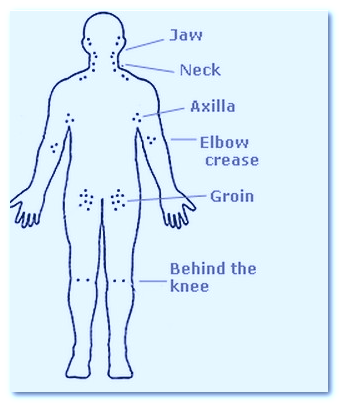
References:
-
Frank H.Netter MD: Atlas of Human Anatomy, 5th Edition, Elsevier Saunders. -
Chummy S.Sinnatamby: Last’s Anatomy Regional and Applied, 12th Edition, Churchill Livingstone Elsevier. -
Richard L. Drake, A. Wayne Vogl, Adam. W.M. Mitchell: Gray’s Anatomy for Students, 2nd Edition, Churchill Livingstone Elsevier. -
Hacking C. MD and Niknejad M. MD et al: Popliteal fossa anatomy (mnemonic). Radiopaedia.org (accessed 19/03/2016). -
Patel M. MD et al: Reactive popliteal lymphnodes. Radiopaedia.org (accessed 19/03/2016).
Illustrators:
- Popliteal artery (dorsal view) – Liene Znotina
- Superficial popliteal nodes (ventral view) – Begoña Rodriguez
- Deep inguinal lymph nodes (ventral view) – Irina Münstermann
Popliteal lymph nodes: want to learn more about it?
Our engaging videos, interactive quizzes, in-depth articles and HD atlas are here to get you top results faster.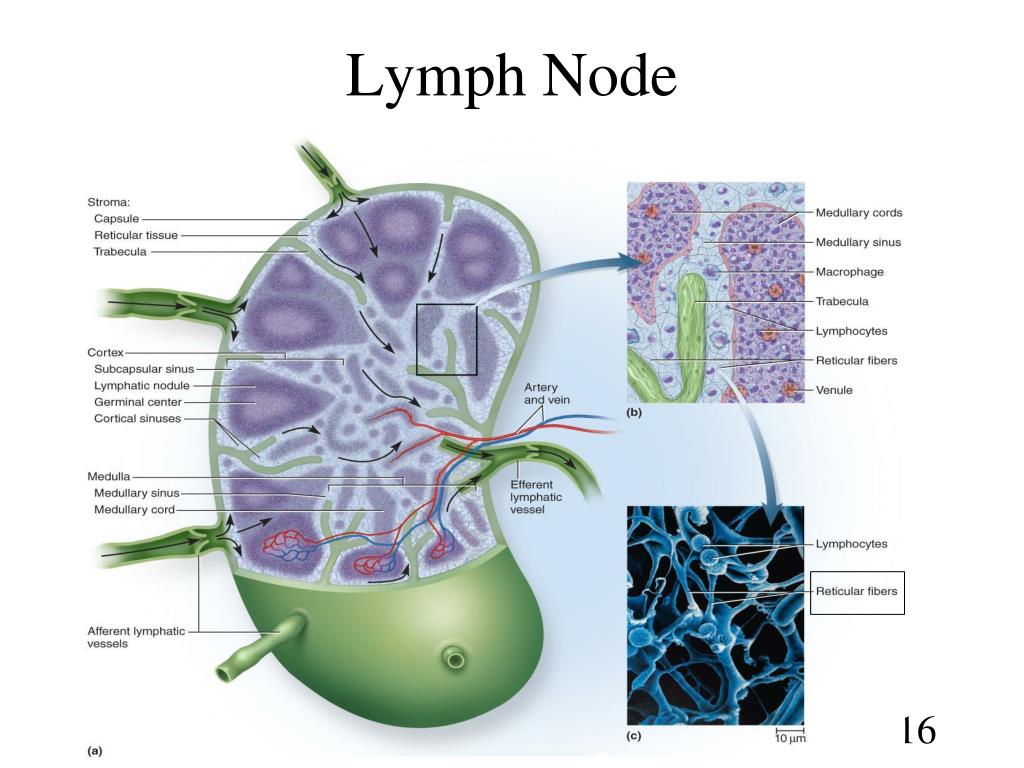
What do you prefer to learn with?
Videos
Quizzes
Both
“I would honestly say that Kenhub cut my study time in half.”
–
Read more.
Kim Bengochea, Regis University, Denver
© Unless stated otherwise, all content, including illustrations are exclusive property of Kenhub GmbH, and are protected by German and international copyright laws. All rights reserved.
How to check your lymph nodes
What are the aims of this information?
This page has been written to help you to understand more about checking your lymph nodes (‘glands’) yourself. It tells you what lymph nodes are, why you should check them and how often you should do a check. It also explains how to check lymph nodes. At the end of the page there is further information on where you can find out more.
What are lymph nodes?
The lymphatic system
Lymph nodes (‘glands’) are part of the lymphatic system, which is a network of tiny tubes that carry a colourless fluid called lymph through the skin and deeper parts of the body. Lymph fluid contains immune cells (lymphocytes), nutrients and waste materials.
Lymph fluid contains immune cells (lymphocytes), nutrients and waste materials.
Lymphatic vessels
Lymph fluid bathes the cells of the skin and internal organs. It drains into lymphatic vessels then larger lymphatic vessels called ducts in the neck before joining the blood stream near the heart (see Figure 1).
Lymph nodes
Lymph nodes (‘glands’) are small ‘bean-shaped’ nodules that contain millions of infection fighting lymphocyte cells. They are found at intervals along the lymphatic vessels like ‘beads on a string’. The lymph nodes filter out harmful organisms and abnormal cells before the lymph reaches the blood stream.
Lymph nodes can only be felt in certain areas of the body (see Figure 1):
- head and neck
- axilla (armpit)
- inguinal area (groin)
- back of knees
Lymph nodes are usually too small to feel.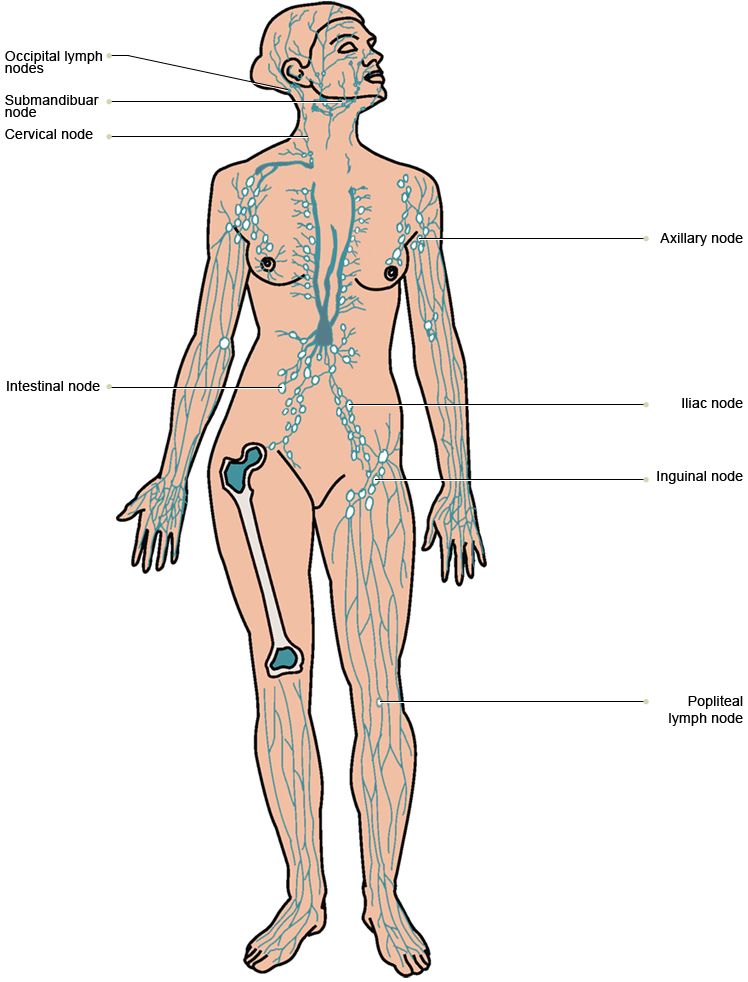 However, sometimes they can be felt in slim people as smooth pea-sized lumps, usually in the groin. Another time when they can be felt is when you have an infection, (for example, a sore throat or an ear infection which can make the neck lymph nodes enlarged, painful and tender as these are the nearest lymph nodes to the site of infection).
However, sometimes they can be felt in slim people as smooth pea-sized lumps, usually in the groin. Another time when they can be felt is when you have an infection, (for example, a sore throat or an ear infection which can make the neck lymph nodes enlarged, painful and tender as these are the nearest lymph nodes to the site of infection).
Lymph nodes can also become enlarged if cancer cells lodge in them. In this case, they are usually painless.
Why should you be checking your lymph nodes?
You may have been diagnosed with a skin cancer that can sometimes spread into the lymphatic system, for example, melanoma or squamous cell carcinoma.
At your check-up visits you will usually have the lymph nodes around the location of your skin cancer examined. For example, if the skin cancer was on your face then the nodes around your ears and neck will be examined, or, if the skin cancer was on your leg then the lymph nodes behind your knee and in your groin will be felt.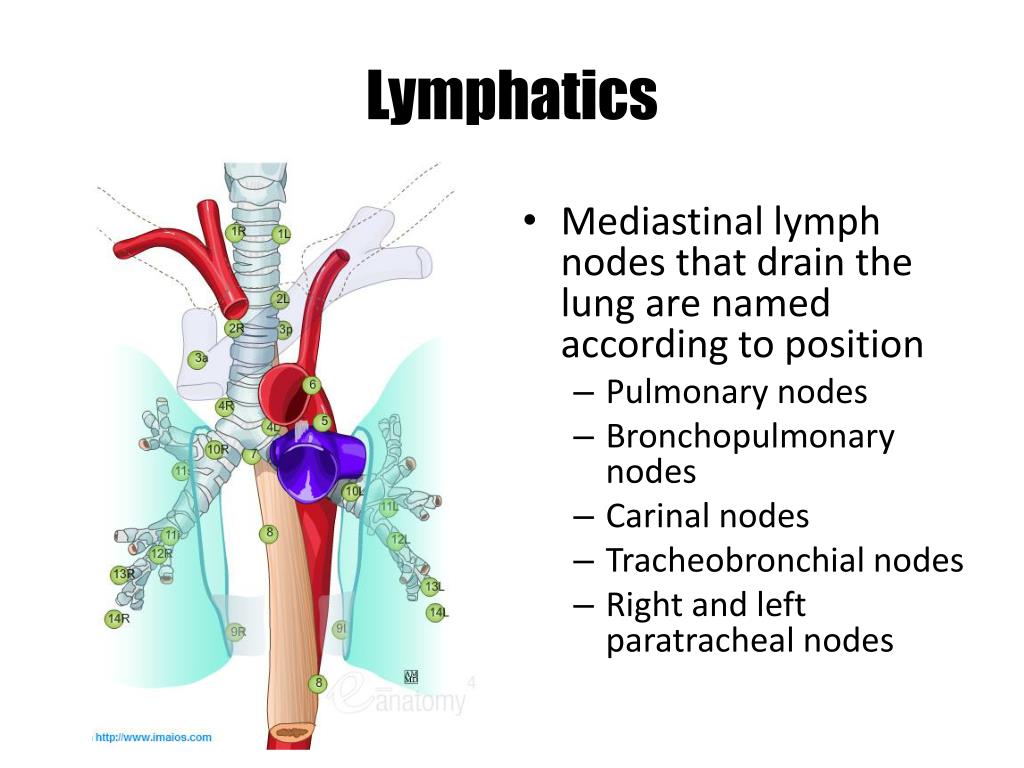 The aim is to detect any enlargement of the lymph nodes at an early stage.
The aim is to detect any enlargement of the lymph nodes at an early stage.
Some people are advised to check their lymph nodes between clinic appointments. If you are worried about enlarged lymph nodes, tell your doctor or nurse specialist straight away, rather than waiting until your next clinic appointment.
If you are unsure about anything in this leaflet please talk to your doctor or clinical nurse specialist, who can show you how and which lymph nodes to check.
How often should I check your lymph nodes?
It is usually advised that you check your lymph nodes once a month. This can be done at the same time as you check your skin for new or changing moles, lumps and bumps.
Non-urgent advice: When lymph nodes appear
Do not be alarmed if you feel a lymph node (especially if it is tender) as it may be due to an infection, but if it has not reduced in size in a week, contact your doctor or clinical nurse specialist.
How to check lymph nodes in the head and neck
Use your fingertips and a gentle circular motion to feel the lymph nodes in the areas illustrated in in the image below. Examine in the order shown, starting at Number 1.
- Start with the nodes in front of the ear (number 1 in Figure 2) then follow in order finishing just above the collar bone (number 10 in Figure 2)
- Always check your nodes in this order
- Check both sides for comparison
- If you have an enlarged lymph node it may feel firm and the size of a pea or grape
To feel for nodes in the neck (number 8 in Figure 2):
- Tilt your head towards the side you are examining, this helps to relax the muscle
- Now gently press your fingers under the muscle
To check lymph nodes above the collar bone (number 10 in Figure 2):
- Hunch your shoulders and bring your elbows forward to relax the skin
- Now feel the area illustrated in Figure 5
How to check lymph nodes in the armpit
- Remove top clothing down to the waist to get easy access to the armpits
- Sit in a comfortable position
- Check each armpit in turn
To check the left side lift your arm slightly then place the fingers of your right hand high into the armpit and then lower your arm.
- Feel in the central area of the armpit
Now move your fingers firmly against the chest wall as follows:
- Along the front border of the armpit
- Along the back border of the armpit
- Feel along the underside of the upper arm
Now check the other armpit in the same way.
How do I check lymph nodes in the groin
There are two areas to feel in the groin (see Figure 7):
- Horizontally along the groin crease
- Vertically along the upper thigh
Where can I get more information about checking lymph nodes?
Wessex Cancer Trust
Bellis House, 11 Westwood Road
Southampton SO17 1DL
Tel: (023) 80672200
Fax: (023) 80672266
wessexcancer. org.uk
org.uk
Email: [email protected]
For details of source materials used please contact the Clinical Standards Unit ([email protected]).
Share this content
Lymphatic system | Library EVC
Lymphatic system consists of intraorganic and extraorganic components and is a complex of lymphatic vessels, through which lymph flows from organs and tissues, and lymph nodes, which are natural barriers for lymph. Inside the organs, lymph collects in blindly ending lymphatic capillaries, which, when merged, form lymphatic vessels.
Lymphatic system of the dog
When leaving the organs (most often through their gates, which are also the passages for blood vessels, nerves and, in some organs, their efferent ducts – for example, the ureters in the kidneys), the lymphatic vessels are called afferent, i.e. . bringing, as the lymph moves towards the lymph nodes along them. The vessels that carry lymph from the lymph nodes are called efferent. The latter, merging, form ducts, through which the lymph enters the cranial vena cava, which is a large venous vessel that carries blood to the right atrium.
The latter, merging, form ducts, through which the lymph enters the cranial vena cava, which is a large venous vessel that carries blood to the right atrium.
The lymphatic system of a dog and a cat has a number of differences from the circulatory system. Thus, the structure of the lymphatic vessels is characterized by the presence of a large number of valves, which are bicuspid and divide the vessel into lymphangions – small areas that are considered structural and functional units of the lymphatic vessels (such a division is absent in venous vessels, which also have valves, since the latter are located at a considerable distance in them). from each other and, in addition, are not present in all veins – they are absent in the cranial and caudal vena cava, as well as some veins of the head).
The walls of most lymphatic vessels are similar to those of veins, also having several layers, including the endothelial, which is internal and directly in contact with the lymph, the middle one, consisting of muscle cells – myocytes, as well as a small amount of connective tissue fibers, and external, formed by connective tissue elements and a small number of myocytes.
All lymph removed from organs and tissues passes alternately through a large number (up to 15 or more) of lymph nodes located throughout the body (there are exceptions – in some animals, from certain organs, lymph flows directly into the efferent vessels before flowing into the lymphatic duct ). Each lymph node has a capsule consisting of connective tissue, a stroma (septum) formed by tissue penetrating from the node membrane, subcapsular sinuses – spaces located under the organ capsule into which lymph penetrates, cerebral sinuses present inside the lymph node.
From the last lymph, as mentioned above, flows through the efferent lymphatic vessels exiting through the gate. In the parenchyma of each lymph node there are a large number of follicles formed by reticuloendothelial cells, and in the sinuses of the lymph nodes there are macrophages and lymphocytes. Due to the listed tissues and cells, the lymph nodes perform their main function, being a kind of biological lymph purifiers.
The number of lymph nodes in the body is about sixty. Their sizes are from 5-6 millimeters to 5-6 or more centimeters (in dogs). In the region of the facial part of the head, the main lymph node is the facial one, lying under a layer of muscles near the middle of the line connecting the corner of the mouth and the inner corner of the eye. It has an oval shape, and its length is one to two centimeters.
Main lymph nodes
Lymph is supplied to the facial lymph node through the vessels coming from the skin, mucous membrane, muscles, from the nose, lips and cheeks, and from it the lymph is directed through the lymphatic vessels to other lymph nodes of the head. In addition to the facial, there are parotid lymph nodes that lie under the parotid gland and receive lymph from the facial lymph node, parotid gland, muscles, eye and ear tissues, bone tissue that forms the skull.
The size of the parotid lymph node is slightly larger than the facial one – up to two to three centimeters. Below the parotid lie the mandibular lymph nodes, the sizes of which are variable – up to five or more centimeters. Lymph is sent to them from the skin, muscles, salivary glands, joints, bones and other lymph nodes of the head. From them, its movement is observed towards the pharyngeal medial and lateral pharyngeal lymph nodes.
Below the parotid lie the mandibular lymph nodes, the sizes of which are variable – up to five or more centimeters. Lymph is sent to them from the skin, muscles, salivary glands, joints, bones and other lymph nodes of the head. From them, its movement is observed towards the pharyngeal medial and lateral pharyngeal lymph nodes.
The lateral (external) retropharyngeal lymph node is located at the atlas – the first cervical vertebra. It receives lymph from the skin, mucous membrane, muscles, bones and other anatomical structures located in the head area. The medial (internal) lymph node lies in the region of the pharyngeal wall at a short distance from the cranial cervical lymph nodes, and the lymph flows to it from the lateral pharyngeal lymph node, after which it is sent through the efferent lymphatic vessels to the lymphatic duct, which opens into the jugular vein, through which the lymph enters then into the cranial vena cava.
The lymph nodes of the neck are represented by superficial and deep lymph nodes. Superficial located in the neck above the shoulder joint, and deep – in groups of 1-3 lymph nodes in the upper, middle and lower parts of the neck. Lymph is supplied to the cranial (anterior) cervical lymph nodes from the muscles, bones (including the occipital bone and cervical vertebrae), larynx, trachea, thyroid and thymus, or thymus, ear and parotid regions, and from them the lymph flows to to the middle cervical lymph nodes located below the neck, or, as from the medial pharyngeal lymph node, to the tracheal lymphatic duct. Caudal deep cervical lymph nodes collect lymph from muscles, bones (cervical vertebrae, scapula, humerus), esophagus, trachea and other organs located in the neck.
Superficial located in the neck above the shoulder joint, and deep – in groups of 1-3 lymph nodes in the upper, middle and lower parts of the neck. Lymph is supplied to the cranial (anterior) cervical lymph nodes from the muscles, bones (including the occipital bone and cervical vertebrae), larynx, trachea, thyroid and thymus, or thymus, ear and parotid regions, and from them the lymph flows to to the middle cervical lymph nodes located below the neck, or, as from the medial pharyngeal lymph node, to the tracheal lymphatic duct. Caudal deep cervical lymph nodes collect lymph from muscles, bones (cervical vertebrae, scapula, humerus), esophagus, trachea and other organs located in the neck.
In the chest there is an intercostal lymph node (lymph from the thoracic vertebrae, pleura, mediastinum is supplied to it), mediastinal lymph nodes (they receive lymph from the mediastinum, heart shirt, heart and lungs), tracheobonchial and pulmonary lymph nodes (collect lymph from the vessels coming from the lungs), as well as the sternal lymph node, to which lymph flows from the muscles and mammary glands.
In the abdominal and pelvic cavities there are also a large number of lymph nodes located both near the organs and in the walls – both abdominal and pelvic. So, in the area of the liver gate there are portal lymph nodes – anatomical formations up to three centimeters long, collecting lymph through afferent lymphatic vessels coming from various abdominal organs, including the liver, pancreas, duodenum, and other abdominal lymph nodes. cavities.
After passing through the hepatic lymph nodes, the lymph through the celiac duct is directed to the lumbar cistern, the anatomical position and structure of which will be discussed below. In addition to the portal lymph nodes in the abdominal cavity, there are lymph nodes of the spleen (located at its gate, receive lymph from the spleen, stomach), omentum (lie on the border of the posterior (pyloric) part of the stomach and duodenum, receive lymph flowing from these organs) , stomach (lie in its pyloric part, drain lymph from the stomach and omentum).
There are also a large number of lymph nodes along the intestines. So, they are present in the mesentery of the duodenum, jejunum, colon. Several lymph nodes are also located at the gates of the kidneys, where lymph is supplied to them from the ureters, kidneys, adrenal glands and testes (in males and cats). From the extremities, lymph flows to the axillary lymph nodes (thoracic limb), popliteal and inguinal lymph nodes (pelvic limb), and among the latter, deep and superficial ones are distinguished.
In general, from all lymph nodes, through a complex system of lymphatic vessels, lymph is directed to several of the largest lymphatic ducts, which include the right lymphatic duct, the right and left tracheal trunks (they run along the trachea, receiving lymph from the efferent vessels of the anterior and middle cervical groups). lymph nodes), lumbar cistern (it is a hollow elliptical formation up to ten or more centimeters long, lying under the lumbar vertebrae; it receives lymph from the celiac, intestinal and lumbar trunks, receiving it directly from the lymphatic vessels flowing from the organs of the abdominal and pelvic cavities , their walls and pelvic limbs), the thoracic duct. The latter is the largest of all lymphatic ducts, absorbing most of the lymph flowing from all organs and tissues of the body of a dog and cat. It starts from the lumbar cistern and ends with the confluence of the cranial vena cava.
The latter is the largest of all lymphatic ducts, absorbing most of the lymph flowing from all organs and tissues of the body of a dog and cat. It starts from the lumbar cistern and ends with the confluence of the cranial vena cava.
The lymphatic system performs vital functions for the body. In the lymphatic capillaries, unlike the blood capillaries, large molecules, leukocytes and other components can penetrate from the tissue fluid. Lymph nodes provide cleaning of the lymph carried through them, which is necessary to perform before the latter enters the bloodstream, namely, into the cranial vena cava and other veins that carry venous blood to the right atrium.
Lymph nodes (one group) – TAIS-MED LLC
Description:
Lymph nodes are organs of the immune system that act as a protective filter that traps toxic substances circulating in the blood – bacteria, bacteria, toxins, tumor cells, etc. Any pathology in the human body leads to changes in the structure of the lymph nodes, which can increase, change shape, increase mobility and the ratio of tissue components. Often, lymph nodes react to pathology even before the onset of symptoms of the disease, so the study is also carried out for the early diagnosis of pathologies.
Often, lymph nodes react to pathology even before the onset of symptoms of the disease, so the study is also carried out for the early diagnosis of pathologies.
The possibilities of ultrasound research allow to examine the following groups of lymph nodes: – Cervical;
– Submandibular;
– Peripheral;
– Axillary;
-Inguinal.
The specialist evaluates the condition of the lymph nodes according to a number of parameters: size, shape, echogenicity, ratio with surrounding tissues. These parameters can change with inflammation of the lymph nodes, with metastasis of malignant tumors in them, as well as with various blood diseases. In a healthy person, lymphatic formations are almost invisible against the background of other tissues, but pathologically altered lymph nodes are well visualized.
Ultrasound is currently one of the leading methods for detecting pathology of the lymph nodes, since deep-seated lymph nodes are not available for clinical assessment by palpation. The accuracy of ultrasound is largely dependent on the quality of the equipment and the experience of the doctor conducting the study.
The accuracy of ultrasound is largely dependent on the quality of the equipment and the experience of the doctor conducting the study.
In the medical center of TAIS-MED LLC, a doctor conducts an examination on a modern SonoAce R 7 ultrasound scanner, which has a high resolution and a set of functions corresponding to high-class devices, which helps to diagnose the highest level. An ultrasound examination of the lymph nodes can be prescribed for local infection or a general inflammatory process (viral diseases, including adenovirus infection, HIV / AIDS, infectious mononucleosis, bacterial infections).
What does an ultrasound of the lymph nodes show?
•Size and position of lymph nodes, their structure
•The presence of an inflammatory or tumor process in them
•Single or multiple nature of the lesion
•Blood flow in the lymph node (a special ultrasound mode makes it possible to make an assumption about the benign / malignant process based on the type of blood circulation obtained).
